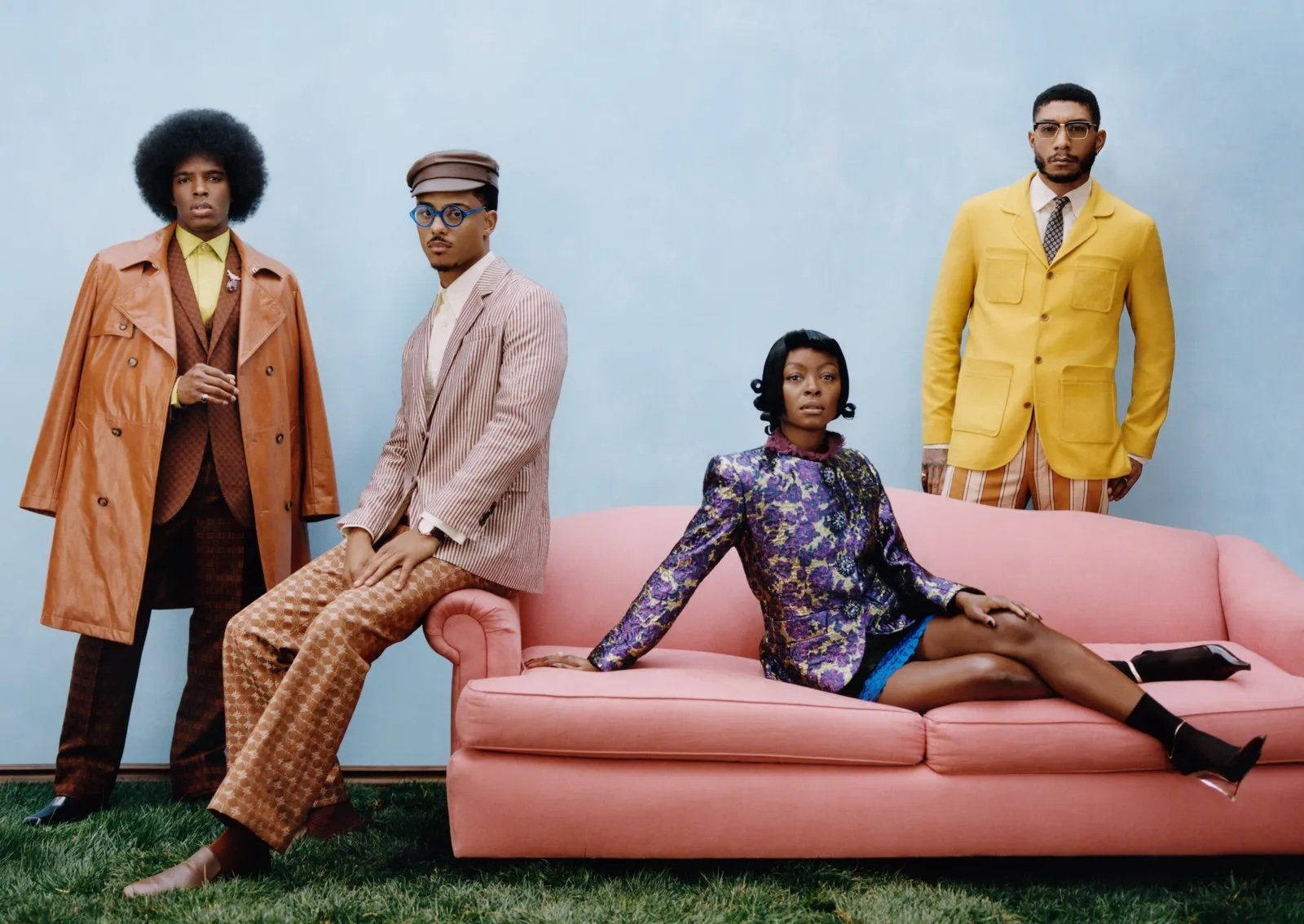Black style, cultural memory and the Met Gala's sharpest theme yet
From left: Rapper Akeem Ali, model Keith Powers, Actor Danielle Deadwyler, Artist Honor Titus. Photo by Quil Lemons for GQ
Every May, the Met Gala arrives on the cultural calendar like a flashbulb storm: celebrity, fashion, spectacle. But before the carpet, the livestreams and the Instagram recaps, there’s something quieter shaping the entire event—a curatorial thesis. The Met Gala is, first and foremost, a fundraiser for The Costume Institute, the only self-funded department of the Metropolitan Museum of Art. Each year’s theme is drawn directly from the museum’s spring exhibition, making the Gala less a fashion free-for-all and more an exercise in interpretation.
This year’s theme, Superfine: Tailoring Black Style, draws on centuries of Black sartorial expression. It’s not just about tailored suits. It’s about fashion as self-definition, as cultural resistance, and as presence. At the heart of the exhibition is Black dandyism—a tradition shaped by artists, thinkers, and everyday people who’ve used tailoring not just to look sharp, but to assert control over how they’re seen.
Behind the brief
Photo 1: André Leon Talley 5th Avenue, Arthur Elgort (American, born 1940), 1986; The Metropolitan Museum of Art, New York, The Irene Lewisohn Costume Reference LibraryPhoto 2: Designer and founder of Fear of God Jerry Lorenzo, actor LaKeith Stanfield. Photo by Quil Lemons for GQ Photo 3: Unknown (American), 1940s–50s. The Metropolitan Museum of Art, New York, Twentieth-Century Photography Fund, 2015 Photo 4: Image architect Law Roach. Photo by Quil Lemons for GQ The Costume Institute sets the tone each year with a museum-led investigation into fashion’s place in culture. The Gala marks the public unveiling of that work. So while the red carpet often grabs attention, it’s the exhibition that casts the long shadow.
Curated with academic rigour, Superfine examines how Black communities across the Atlantic diaspora have historically used dress to shape and reclaim identity. From the Harlem Renaissance to today’s red carpets and runways, the exhibition pulls together garments, portraits, photographs, and personal effects that tell a story of style as language.
Fashion here is not just surface. It’s strategy. And for Black creators and wearers, tailoring has often been both armor and expression.
A theme that looks back to look forward
Left: Blues singer Gladys Bentley in Harlem, New York City, c1930. Photo by Michael Ochs Archives/Getty ImagesRight: Model Adut Akech and singer Yseult. Photo by Quil Lemons for GQBlack dandyism traces its lineage through resistance. In the 1940s, zoot suits—with their bold silhouettes and excessive fabric—became political statements during the wartime rationing era. During the Harlem Renaissance, tailored clothing became a marker of cultural capital. Today, artists like Jidenna or stylists like Law Roach continue the tradition, blending sharp tailoring with bold personal style to tell stories far beyond the seams.
Superfine doesn’t offer an aesthetic moodboard. It offers a call to engage. The 2025 theme isn’t asking attendees to recreate looks. It’s asking them to understand the cultural significance of what they choose to wear. That’s a different kind of assignment.
Does dressing to theme even matter?
Photo sourced from Newsweek
Every year, conversation swirls about who “got” the theme and who didn’t. Some interpretations are masterful. Others are confusing. But increasingly, fans and critics alike are asking whether rigid adherence to the theme should even matter.
Some argue that the best looks don’t replicate the exhibition—they respond to it. Others say that failing to engage, especially when the theme carries this kind of cultural weight, feels like a missed opportunity. There’s a growing body of discussion online that points to the tension between red carpet brand strategy and curatorial intent. Some online conversations, like this one, argue that dressing to theme is not mandatory—and never has been. The Met Gala's guidelines don’t require guests to follow the exhibition's concept, which opens the door to interpretation, brand alignment, or personal preference.
The quiet choreography behind the looks
Most Visible Brands at the Met Gala 2024. Photo sourced from lefty.io
What guests wear is often shaped long before the Gala. Designers and brands begin planning months in advance, well before a look is sketched or a table is set. Every invite is routed through Anna Wintour's final say, but behind that are brand partnerships, stylist deals, and marketing strategy. Brands often 'host' a table—think Valentino, Dior, or Louis Vuitton—and hand-select which celebrities they’d like to dress and bring as their guests.
Once a celebrity is confirmed at a brand’s table, they’ll typically wear a custom look from that house, designed in collaboration with their stylist and the creative team. These aren’t just outfits—they’re image plays. A well-executed Met Gala look elevates both the brand and the talent. These pairings can spark headlines, launch campaigns, or signal new creative alliances in the fashion world.
It’s not uncommon to see Rihanna in a runway-fresh Comme des Garçons look, or A$AP Rocky in a quilted ERL ensemble inspired by Americana. These are not passive pairings. They’re storytelling decisions crafted with precision to reflect both the theme and the designer’s vision.
When it works, it’s seamless. When it doesn’t, it’s usually because the look is trying to serve too many masters: theme, branding, and wearability.
Looking beyond the seams
This year’s Met Gala asks something more of its attendees. It’s not about arriving in the most expensive garment. It’s about showing up with awareness. Superfine is a theme that carries memory, history, and cultural weight—and the fashion world has been handed the rare opportunity to treat that history with reverence.
The looks may be dazzling. But what’s more compelling is the intent behind them. Tailoring, in this context, becomes a way to say something—about who we are, what we carry, and how we show up in evolving cultural spaces.
When the red carpet rolls out, the real question isn’t who you're wearing—it’s whether the look says something beyond the surface.









